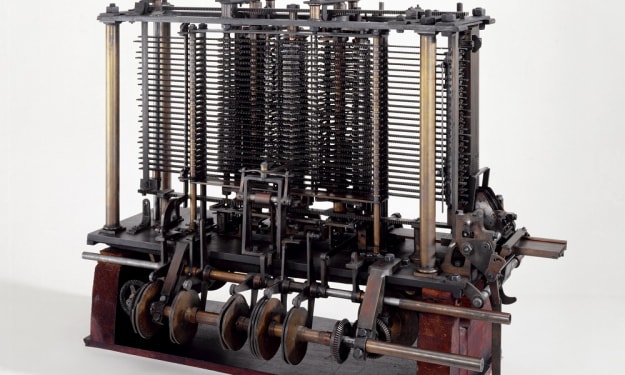
Chester F. Carlson (February 8, 1906 - September 19, 1968) was an American scientist and inventor of xerography (dry copy of electrostatic), a process that received applications in everything from the copying office to the reproduction of printed books. Chester Floyd Carlson was born in Seattle, Washington, in Feb.
At the time Chester Floyd Carlson, the inventor of the machine, studied law school at night to get a permanent job in his patent department at P.R. Mallory, a battery manufacturer in New York City. Carlson's early years went a long way in making him a hard-working, talented engineer.
Carlson took a law course at night and worked in the patent department in Mallorca, where he defended his innovation through a patent network. He owns the copyright process in 1937 after discovering how it can work. After proving that he had a procedure called electrophotography, which provides a way to copy documents, he applied for a temporary patent to protect his opinion.
In 1938, Carlson collaborated with the German philosopher Otto Kornei as his assistant in photocopying, and the electrophotography science later known as xerography was born. Years ago, Carlson used Kornelis to produce copies using the basic process we use today to produce important documents. Much work remains to be done to develop a new drying process, later called Xerograph, and Carlson himself applied for the patent rights of this method in 1939 and 1940.
Carlson entered into an agreement with the Battelle Memorial Institute, a nonprofit industrial laboratory, in 1944 to establish his new dry copying system later called the first phase. Carlson had money, laboratory equipment, and a talent for repair to turn his experiments into a functional copying machine ready for public use. In 1944 he collaborated with Battelle to develop and market a paper-based copying process and made a license agreement and consultation agreement with Haloid Company in 1947, then known as Xerox Corporation.
Haloid, a small New York-based organization that produced and distributed photographic paper at the time, decided to call photocopiers based on Xerox technology, and the name was registered in 1948. The Haloid Company in Rochester, New York showed racism in 1948 and in 1959 the first copy of Xerox was sold. In 1958, the company renamed itself Xerox Company and claimed that Xerography, a photographic process developed by Chester Carlson, would become its largest business.
In 1947, Haloid approached Battelle, a small New York-based organization that produced and sold photographic paper, obtain a license to produce and advertise photocopiers based on electrophotographic processes. Haloid Company, based in Rochester, New York, had expressed interest in Carlson's copying process in 1946 and thereafter agreed to sponsor Battelle's research, which began in January 1947. Battelle and Haloid (a Rochester photography manufacturer founded in 1906) demonstrated the technology on October 22, 1948, 10 years after Carlon's first successful research.
While people were repeating documents with mimeography and photographic statistics, Chester Carlson, who worked until he attended law school, tried and developed a process to establish with his assistant Otto Kornei, who worked with an Austrian naturalist.
Carlson pressed a piece of paper mixed into a prepared plate to temporarily transform the fragile powder image into a permanent form. The scientific breakthrough came in 1938 when Carlson and his partner Otto Kornei coated a plate of zinc with sulfur and applied it to the surface of a cotton handkerchief. Carlson described a lesser-known study in a Xerox Corporation article entitled "The Story of Xerography" in visually advanced images and other processes that used light to create chemical changes to make copies.
Chester Carlson had an idea and wanted to make a machine that could copy the existing document to a piece of paper. He used a steady supply of electricity to make a light handkerchief to wipe the powder and made the first copy on October 22, 1938. He understood that a patent would only apply if he recorded all the steps he took when filing a patent in due course.
Chester F. Carlson's invention of the copying process known as xerography has changed the way business is done locally and internationally. Carlson was the founder of xerography, a process of copying paper. In 1938 he made a patent for the process and acquired another 38 patents for development.
The basis for Carlson's invention in mind, he used a steady electric current, handkerchief, and lamp to dry the powder and made the first copy on October 22, 1938.
The process behind the haloid, called xerography (derived from the Greek word for dry writing), was conceived by a man - Chester Carlson, a shy and gentle patent attorney who grew up in impoverished poverty and worked for a college and went to the California Institute of Technology. Carlson stayed with Haloid, a Rochester photography company, and registered the rights to electrophotography in 1955 (the so-called xerography), and he served as coordinator until his death at the age of 62 in 1968 in 1968. Haloid published the first automated copy in 1959, 21 years after Carlson's first invention.
Founded in 1938 by Chester Carlson and developed and marketed by Xerox Corporation, the xerographic process is used to produce high-quality text, drawings, and images on paper. Since Chester Carlson and Kornei in 1938 stripped of the first roll of wax paper in Astoria, the number of copies produced by xerotic machines worldwide has skyrocketed. His work at the New York Patent Office required him to produce a large number of copies of important documents.





Comments
There are no comments for this story
Be the first to respond and start the conversation.